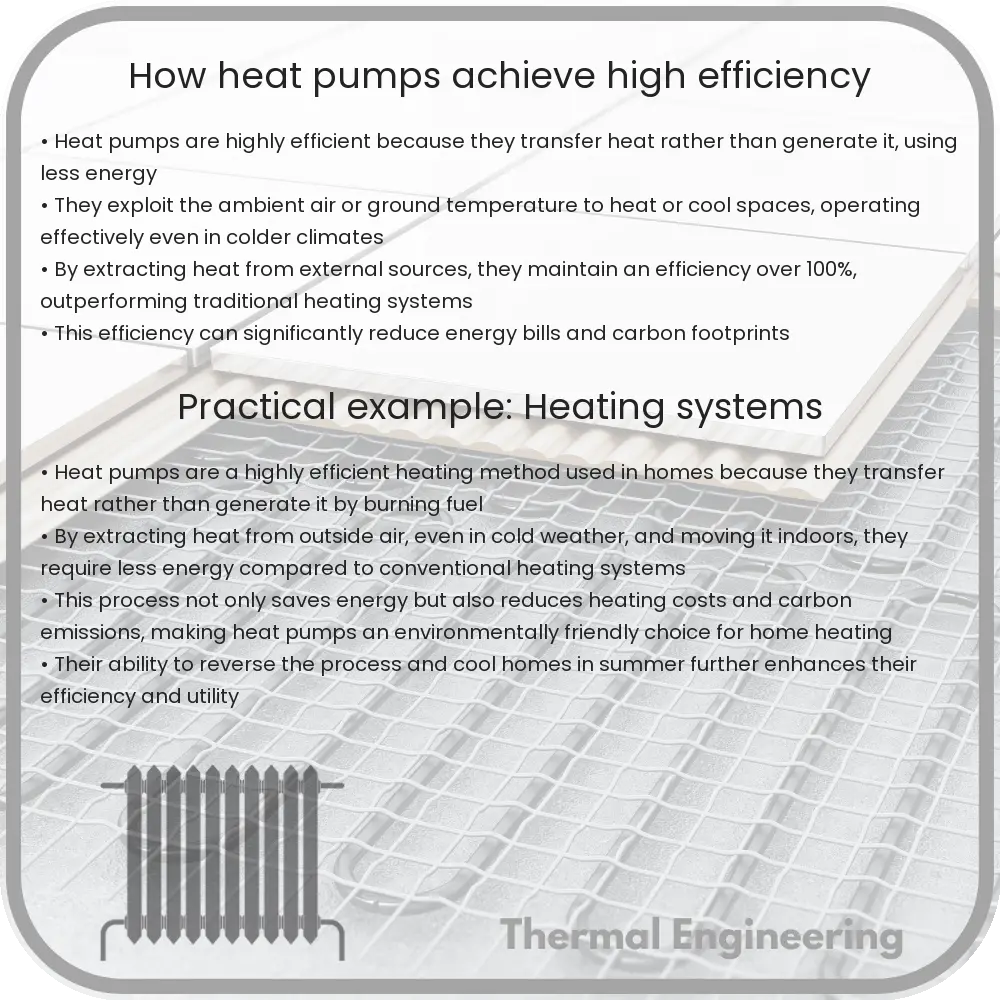Learn how heat pumps provide efficient heating and cooling by using the refrigeration cycle, with insights on their high Coefficient of Performance (COP) and eco-friendly impact.

Understanding the High Efficiency of Heat Pumps
Heat pumps are remarkable devices widely used in heating, ventilation, and air conditioning (HVAC) systems for their ability to transfer heat efficiently from one place to another. They play a crucial role not only in household heating and cooling but also in various industrial processes. The secret behind the high efficiency of heat pumps lies in their operating principles and the use of the refrigeration cycle to maximize energy usage.
How Do Heat Pumps Work?
At the core of a heat pump’s operation is the refrigeration cycle, which typically involves four main components: an evaporator, a compressor, a condenser, and an expansion valve. The cycle starts with the evaporator, where the refrigerant absorbs heat from its surroundings, causing it to evaporate. The gas form of the refrigerant is then compressed by the compressor, which increases its temperature and pressure. The hot, high-pressure gas moves to the condenser where it releases the absorbed heat into the heating system or outside environment, depending on the mode of operation. Finally, the refrigerant passes through the expansion valve where its pressure and temperature decrease, and it returns to the evaporator to repeat the cycle.
Key Factors Contributing to High Efficiency
- Co-efficient of Performance (COP): The efficiency of a heat pump is often expressed through its Coefficient of Performance (COP), which is the ratio of heat output to the electrical energy input. The higher the COP, the more efficient the heat pump. Typically, heat pumps have COP values ranging from 3 to 6, meaning they can transfer 3 to 6 times more energy than they consume.
- Reverse Cycle: Heat pumps can operate in reverse cycle, meaning they can provide both heating and cooling. This reversible functionality allows them to be used efficiently year-round, providing more value and efficiency in energy use.
- Temperature Differential: The efficiency of a heat pump also depends on the temperature difference between the heat source and destination. Smaller temperature differentials generally result in higher efficiencies, which is why heat pumps are especially efficient in moderate climates.
- Advanced Technologies: Modern heat pumps integrate advanced technologies like variable-speed compressors and brushless DC motors which enhance their efficiency and operational flexibility.
Environmental Impact and Sustainability
Heat pumps are considered environmentally friendly compared to traditional fossil fuel-based heating systems. Since they move heat rather than generate it by burning fuel, they produce fewer greenhouse gases. When powered by renewable energy sources such as solar or wind power, the environmental benefits of heat pumps increase significantly, making them a key technology in efforts to reduce global greenhouse gas emissions.
Conclusion
Heat pumps represent a highly efficient and environmentally friendly solution for heating and cooling needs across residential, commercial, and industrial settings. Their ability to move heat rather than generate it from scratch allows them to operate with high efficiency and low energy consumption. Understanding the principle behind their operation and the factors affecting their efficiency can help consumers and professionals alike to make informed decisions about their heating and cooling solutions.